| Zeitschrift Umělec 2003/1 >> Game & art engine | Übersicht aller Ausgaben | ||||||||||||
|
|||||||||||||
Game & art engineZeitschrift Umělec 2003/101.01.2003 Denisa Kera | games | en cs |
|||||||||||||
|
Artwork made with digital technology is more and more often becoming focused directly on software and on art possibilities that arise from using computer code. In new ways similar artworks are defining the digital image and sound, for example, in software for DJ-ing or VJ-ing, including popular products of digital culture, like computer games. In fact, computer games are moving ever closer to being at the center of many artists’ interest. They are creating their own modifications of popular games or organizing real performances in the on-line environment of games, as well as modifying their ordinary operation.
The reason for artists’ interest in computer games is both their popularity and technical possibilities. Various game engines are often the best software for working with graphics and using computer systems and hardware. A high-quality game engine is software (sometime with its own program language) that knows how to quickly process graphical information while other users on the net simultaneously interact with the game environment. A gaming engine actually draws together everything that could be asked for from a computer today. Consequently, experiments with the creation of an “art engine” may be the bravest examples of digital art. Thus only two attempts at “art engines” are known. The famous NYBBLE engine http://www.climax.at/nybble by the artist and cyber feminist Margarete Jahrmann in cooperation with Max Moswitzer, and acmi {{ park }} engine http://www.selectparks.net/acmipark.htm by the Australian group Selectparks. Most artists have chosen less ambitious, but still provocative projects, and are even art modifications of already existing games and engines (famous mods by Brody Condon or “sprays” by Anne Marie Shleiner). Some are on-line performances in the environment of the computer game (Joseph DeLappe), and use of visual possibilities in the computer game for VJ-ing and “off-line” performance. But the first art experiment to create a “traditional” computer game coming from different versions of “Briar-rosemary,” which the well-known art couple from the group Entropy8zuper.com (project “Tale of Tales” http://tale-of-tales.com/) is currently working on, could also be named here. Art “mods” and the political subversion of the computer game The use, actually abuse, of computer code in the “art modifications” of computer games serves a similar purpose as the use of color in impressionism, or the layout of perspective and shapes in cubist images. A similar intervention alters our visual experience to reveal what the picture is, how to see and represent, and what art really is. The manipulation of computer code in games is, in fact, an attempt at “avantgarde” programming. The goal is to change the visual experience of the standard products of digital technology more than to improve and look for increasingly more realistic 3-D representations. Art algorithms and coding, then, change not only our visual and aural experiences, but also try to show and update computer code and its operation, instead of attempting to “hide” it. Variously modified computer games, so-called modifications or mods, touch into the look of the objects in the game (the so-called skins), create whole new maps or worlds (so-called levels) or directly change and disrupt the computer game code: through what they influence, not just the look but also the behavior and interaction of the game’s subjects. A typical result of art mods is surprisingly “experimental” animation, which reduce the story and interactivity of the game to a purely visual experience. While digital art (and most installations today) examines possibilities in interactivity, which is standard for computer games, the art mods of computer games actually move in the opposite direction. Their interactivity gives ground to visually interesting and experimental films, which come from the fascinating possibility of cracking the game and changing its code. Visually and acoustically interesting “films” represent the disrupted and variously adjusted system of the computer game. For example, the above-mentioned “Nybble engine,” which is not just a modification but a real “art engine,” operates directly for the cooperation of more users with changes of computer game codes in real time. The results are interesting animations and sounds that do not represent action or interaction — they are a direct projection of the software or processes evoked within the machine. Manipulations by more users, as in on-line games, become visible in the form of “on-line movies” called “digital road movies” due to processes rather than the stories that films show. The Nybble engine is actually art software that works for the collaborative “reprogramming” of computer games and the visualization of those “battles” on the level of programs. To play in this environment means changing codes directly, and observing changes in real time. In the festival DEAF 03. (Dutch Electronic Arts Festival) this year in Rotterdam, artists presented other possibilities for the art engine. They used typical functions in computer games like shooting or attacking and programmed the engine so that the shooting function would automatically send antimilitary e-mails, or an attack would ping a massive load to .gov servers. The art computer game here took on the form of hacking and political protest, through which an attack became cooperation and shooting became at attempt at communication. Political protest is also the intention behind Velvet-strike by Anne-Marie Schleiner http://www. opensorcery.net/ velvet-strike/ about.html, which offers protest graffiti, sprays used in the popular game Counter Strike against terrorists (what is actually a mod of the popular game Half-Life). The graffiti is simple to install and even simpler to “spray” the surroundings. The aim of the graffiti is to parody the militant and aggressive nature of the game and to protest against the recent war in Iraq. Therefore they show, for example, a group of soldiers in the shape of a heart, various homosexual scenes between soldiers, cute teddy bears with guns, messages like “If God tells you to kill, kill God” and so on. Normal players were revolted by Velvet-Strike and there have been a number of aggressive attacks against the artist. On the site there are a number of descriptions of other subversive acts that we can take part in while experiencing the environments of various games. While similar projects connected to political activism or criticisms of games aimed more at performances in an on-line environment, standard art modifications of games have the character of an esthetic examination of corrupted algorithms and their visual representation. A good example of these modifications is the project Retroyou R/C by Joan Leandre http://www.retroyou.org/. The artist created several mods of games with race cars (RC Re-volt 8 b). Different levels of manipulation with software — the game begins with changes in the parameters of gravity and movement, which still allow interaction with the user. Other manipulations with the code create very abstract and interesting experimental films, in which it is no longer possible to navigate as they run by themselves like special screensavers. First level, “[RCO 1] acclaim the hood” only changes the movements of the car, which we can, with some effort, still drive. The next level, “[RCO2] butterfly overflow: fck th gravity code” completely cancels the gravity effect, which considerably complicates our interaction with the car, but on the other hand this creates a visually attractive environment. At the level “[RCO3] red hood red boot” the entire game actually transforms into an art film. Confrontation of the on-line and off-line in the game environment and connections to VJ culture Similar films or animations like Retroyou R/C or films created by Nybble engine visually present and document the internal processes in the computer. We could compare them to irrational dreams by the computer in which the codes cease to refer to our normal world, cease to simulate the cars or other objects of our experience, and cease to communicate with us. The art mods actually show a completely autonomic dimension of computers and programs. Besides this esthetical examination of program autonomy and the mentioned political protests in the on-line environment, another motivation for art mods is also the effort for the confrontation of the on-line and off-line environments. Maybe the most distinctive artist in this respect is Brody Condon with his numerous projects on the site http://www.tmpspace. com/. Condon calls the creation of his mods “digital folklore,” people’s art. The mods are the representation of players’ activity, who instead of being in the role of passive consumers decide to actively interfere in the product, modify and parody it. According to Condon, computer games for players are becoming an instrument of communication with the world. The interface of the game is actually a filter through which the player communicates with the world, and therefore it is only natural that he tries to alter it. The new interface of the computer game or mod can also then become a sort of self-portrait of the player. In Condon’s mods, he tracks the confrontation with the private environment of the player in the on-line environment. The relationship between games and everyday life is otherwise the subject of speculation about the sociopathic effect of computer games. More interesting than critical speculations about games are the attempts to bring into confrontation games and the known, everyday environment. A well-known example of this kind of art strategy is the game Museum Meltdown by the Swedish artists Tobias Bernstrup and Palle Torsson, http://www.bernstrup. com/meltdown/, where the standard battle against mutants takes place in a 3D-model of the contemporary art gallery Arken in Copenhagen. Relocating the known surroundings of our home, office, street, museum or town into the computer game fundamentally changes our gaming experience. Acts like killing, shooting or other pathological forms of behavior suddenly become impermissible, and the realization of how far these are from our everyday activities and experiences begins to creep in. Another example of a similar confrontation are the eight mods Adam Killer on the engine Half-Life http://www.tmpspace.com/ adam_killer.html, which were created by Brody Condon and which examines the “esthetics” of killing and shooting in games. The artist used his friend Adam Frelin as an avatar (3D hero) model, who has the habit of wearing white clothes, which contrast well with the blood and killing in the game. The death and shooting make the accentuated visual effect of movement trails on the screen. An error in the software causes the trails that Brody uses in order to take advantage of the blood experience. The error, which is called a “trailing effect,” creates a chaotic mixture of blood and scraps of texture during a killing, which still allows the strong contrast of red and white. Besides the esthetical use of an error in the program, the selection of the hero-avatar is in itself important. The placement of a real model or person into the game environment makes the killing and shooting less anonymous. This kind of confrontation and interference of the gaming environment with normal life could be interpreted as sociopathic. But the question remains whether and how much these fantasies in the computer game are the effect of the cause of violence and the hunt “to score points” in the real world. Besides Adam Killer, Brody’s project Chinatown is another confrontation of on-line and off-line environments. The game was installed for many users in a gallery in China Town in Los Angeles. The game does not allow for shooting or other typical player activities and serves more as a place to compare the past and present of this district. These confrontations between real and game environments Brody often calls an examination of the interactive media influence on the culture in the USA. In addition, there are often experiments with environmental technology in the research for the development of computer games, mainly C++, polygonal 3D models, etc. The deconstruction of games into psychedelic visuals also belongs to club culture and performances. Brody examines the connection of games and game environments with VJ-ing, for example, in the project “c0a0,” which turns the intro to the well-known game Half-Life into a kind of abstract movie (the name comes from the file c0a0.bsp, which consists of the intro for the entire game. As Brody demonstrates, similar game modifications, regardless of whether they are motivated by the attempt to criticize the gaming environment or, conversely, research its visual abilities and discover its autonomy, always require the tactics of the hacker, the sensitivity of the player and the courage of the artist.
01.01.2003
Empfohlene Artikel
|
|||||||||||||
|
04.02.2020 10:17
Letošní 50. ročník Art Basel přilákal celkem 93 000 návštěvníků a sběratelů z 80 zemí světa. 290 prémiových galerií představilo umělecká díla od počátku 20. století až po současnost. Hlavní sektor přehlídky, tradičně v prvním patře výstavního prostoru, představil 232 předních galerií z celého světa nabízející umění nejvyšší kvality. Veletrh ukázal vzestupný trend prodeje prostřednictvím galerií jak soukromým sbírkám, tak i institucím. Kromě hlavního veletrhu stály za návštěvu i ty přidružené: Volta, Liste a Photo Basel, k tomu doprovodné programy a výstavy v místních institucích, které kvalitou daleko přesahují hranice města tj. Kunsthalle Basel, Kunstmuseum, Tinguely muzeum nebo Fondation Beyeler.
|







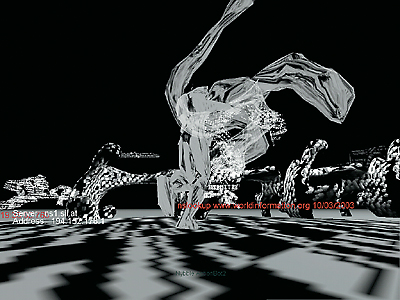



























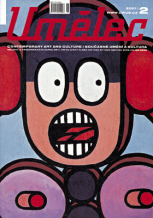
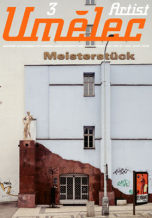
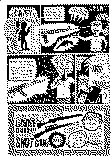
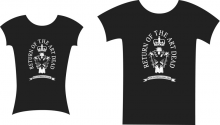


 We Are Rising National Gallery For You! Go to Kyjov by Krásná Lípa no.37.
We Are Rising National Gallery For You! Go to Kyjov by Krásná Lípa no.37.
Kommentar
Der Artikel ist bisher nicht kommentiert wordenNeuen Kommentar einfügen